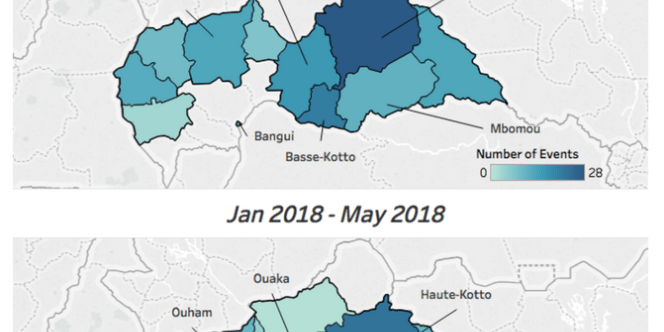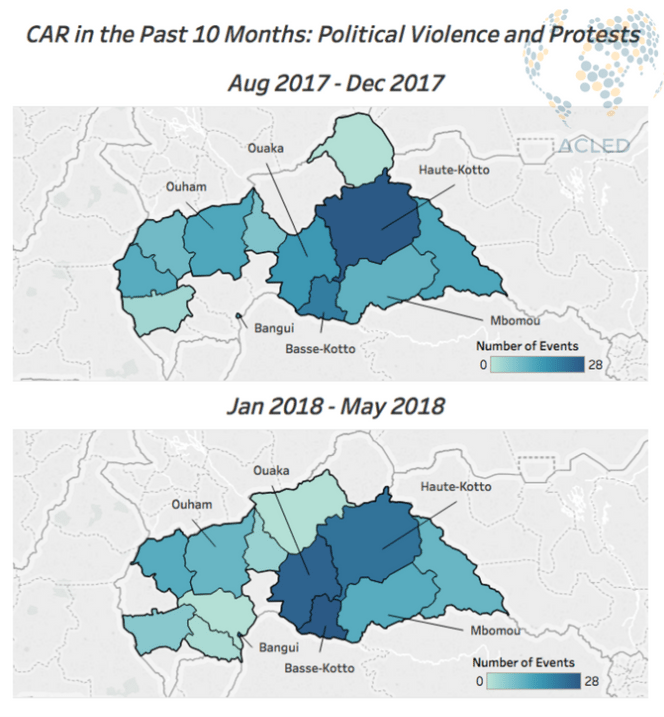In the first half of 2018, political violence in the Central African Republic has both increased and spread to new regions. See the maps of Aug-Dec 2017 and Jan-May 2018 to observe the spread of violence across new regions.
In the second half of 2017, only the Haute-Kotto region experienced intense conflict, notably around Bria, where the Lord’s Resistance Army (LRA) and the Popular Front for the Renaissance of Central Africa (FPRC) were the most active groups (Al Jazeera, 28 February 2018). The Haute-Kotto is a rich source of diamonds, so the LRA and FPRC (as well as other militias) compete to control access to the diamond revenue.
In the first 5 months of 2018, however, reports of political violence have increased in the provinces of Ouaka, Basse-Kotto and in Bangui. All of these provinces experienced different kinds of political violence. In Ouaka, there were clashes between the Union for Peace in the Central African Republic (UPC) and gendarmerie or MINUSCA forces around the cities of Bambari and Ippy. Most notably, following UPC attacks on the gendarmerie, the UN MINUSCA forces launched airstrikes against the UPC in Ouaka (RFI, 2 June 2018). The Basse-Kotto, on the other hand, has experienced intense activity by self-defence militias. In February and March there was particularly intense militia activity in Alindao, with MINUSCA intervening to protect civilians. Meanwhile, the violence in Bangui, the capital city of CAR, has mostly been driven by neighbourhood ‘PK5’ militias, who have targeted civilians and MINUSCA forces (ACLED, 16 May 2018).
The level of violence in the Eastern and Western regions has remained steady throughout this period. The violence in the provinces of Ouham and Mbomou is still consistently high, in spite of the presence of MINUSCA. In fact, the MINUSCA forces appear increasingly over-stretched and powerless vis-à-vis the growing contestation (Le Monde, 25 May 2018).
Both the security and political situations have worsened progressively since 2016, when the French intervention, Operation Sangaris, ended, and when Touadéra became the president of CAR. A war economy has increasingly taken root, enabling the criminal elites, supported by international actors, to strengthen their means of coercion. The spread of political violence to new regions in the first part of 2018 is a worrying sign that this violence will not abate.
AfricaAnalysisCivilians At RiskConflict MonitoringEthnic MilitiasFocus On MilitiasLRAPolitical StabilityPro-Government MilitiasResourcesVigilante MilitiasViolence Against Civilians







